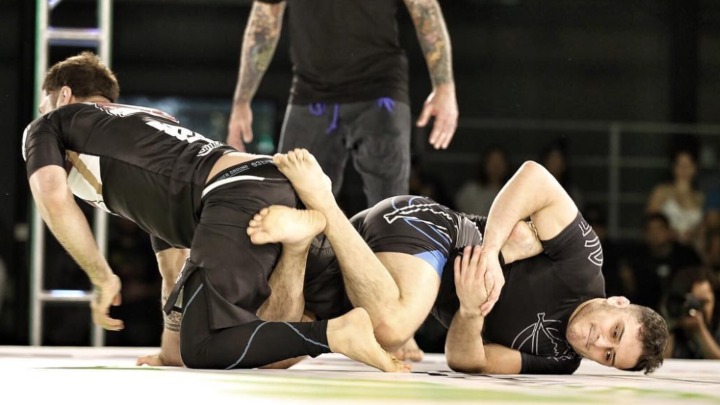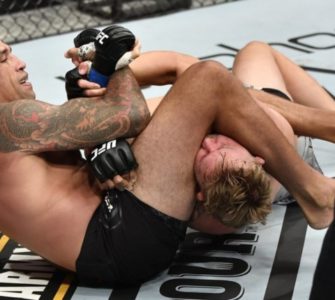Guest post by Evolve MMA, Asia’s premier championship brand for martial arts. It has the most number of World Champions on the planet. Named as the #1 ranked martial arts organization in Asia by CNN, Yahoo! Sports, FOX Sports, Evolve MMA is the top rated BJJ gym in Singapore.
Brazilian Jiu-Jitsu (BJJ) aficionados are quite used to the breakneck speed of new techniques being developed in the grappling world. As soon as one particularly popular takedown, passing sequence, or submission rises to the top of every forum discussion and becomes the center of the most anticipated technique DVD, a new top-tier competitor will use a seemingly unstoppable technique to crush through competition, and the cycle will begin all over again. What causes this endless cycle is BJJ’s intrinsic nature of development combined with the perpetual excitement of the BJJ community, who are always eager to dissect and replicate the newest techniques showcased by top-ranked competitors.
In an attempt to help you grasp the most hyped submissions before they are inevitably pushed out of the spotlight and replaced by the next set of techniques, we’re going to highlight three submissions that are all the buzz of the Brazilian Jiu-Jitsu community and explain just what it is about them that is driving all the excitement.
Caio Terra Foot Lock
As one may surmise from its name, our first submission was developed by the legendary competitor Caio Terra. While Mr. Terra implemented this foot lock at the highest levels of competition for years, it was never given its due until recently. Essentially, this submission hold is a way to effectively and efficiently apply an ankle lock to an opponent from the De La Riva guard position without having to abandon the coveted De La Riva hook. This is obviously tactically advantageous, as not having to abandon the guard allows for a whole array of follow-up sweeps and submissions if the initial attack fails. While he had great success with his trademark move, the maneuver never found widespread popularity outside Caio Terra’s circle of affiliate academies. Until now.
Since Australian prodigy Craig Jones used the submission to tap out Richie “Boogeyman” Martinez in Quintet 3, the Caio Terra foot lock has been the source of many excited forum discussions and drilling sessions. Foot locks are all the rage right now, as the BJJ community is looking to correct its previous neglect of lower body submissions, and the ability to attack an opponent’s lower extremities without having to abandon a powerful guard position, such as the De La Riva, is a dream come true for most traditional BJJ players.
Coupled with the fact that this move was executed by one of the sport’s most sensational grapplers at one of the sport’s most sensational tournaments and also on a very tough opponent, it is not surprising why this submission is generating so much enthusiasm.
Inside Heel Hook
As previously mentioned, one of the most popular trends in modern grappling is the focus on targeting the lower half of an opponent’s body with leg locks. The most formidable of these leg locks, the inside heel hook, is causing a sustainable shift in the competitive grappling scene.
While it was once viewed as a cheap and dangerous submission technique, it is quickly becoming apparent that the inside heel hook will remain a staple move of the grappling arts. The current attention given to this particular submission hold is no doubt due to the work of John Danaher and his students.
What makes this variation of the heel hook so effective is the intrinsic nature of the hold. By twisting the heel, the attacker is using the strong muscles in their back against the relatively weak ligaments of the knee, a battle they are almost sure to win. Due to this structural advantage, what was once a neglected technique in the submission arsenal has quickly become a move that even novice practitioners are learning and implementing safely and effectively.
Kimura
Our last submission is proof that the most exciting techniques aren’t always a groundbreaking new move but can sometimes just be a new way of approaching a time-tested classic. Since the Kimura (gyaku ude-garami) shoulder lock was used by the infamous Masahiko Kimura to defeat Helio Gracie in 1951, the lock has gone through several periods of waning development and popularity, with the current phase being particularly exciting.
While the figure four lock is not by itself a state-of-the-art development, it is in how it is being utilized. A newly recognized ability to use a Kimura grip to defend and counter takedowns as well as pass the guard has propelled the once “basic” submission hold into the forefront of the Jiu-Jitsu meta. While it was first popularized by Keenan Cornelius in his 2013 ADCC match vs. Dean Lister, nowadays you can hardly go through viewing a weekend of combat sports without seeing the Kimura used in a counter takedown or guard pass situation. A great example of this is when Davi Ramos used the Kimura grip to pass Nick Hein’s guard and take his back at UFC 224.
Due to the newly realized secondary uses of the Kimura grip, the submission hold itself is seeing a comeback in BJJ competition. Players now realize they can counter a disadvantageous situation, such as being trapped in their opponent’s guard or caught in a single-leg takedown, with a jarring shoulder lock, and be able to take advantage of this for a long time!
The constant development of Brazilian Jiu-Jitsu is what drives so many to be passionate about the sport. While these are just a handful of submission holds that are all the rage right now, it is safe to say they are not the last that will take the Jiu-Jitsu world by storm. Make sure you get to your academy and practice these three so that you have them mastered by the time the next groundbreaking techniques are brought into the limelight!

















